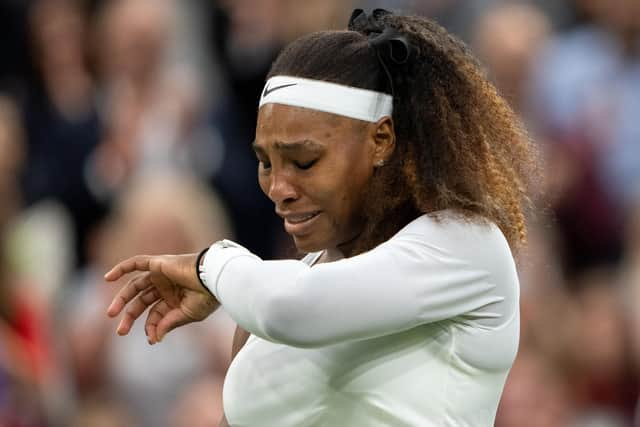Wimbledon 2021: Andy Murray criticises 'extremely slippy' court after Serena Williams injury - why is Centre Court so slippery?


In the tournament’s first big upset, the seven-time Wimbledon Grand Slam champion Serena Williams was forced to retire from her match against Belarusian player Aliaksandra Sasnovich yesterday (June 29).
Williams was in tears as she left Centre Court following her injury on the grass – which took place just over thirty minutes into her match against Sasnovich.
Advertisement
Hide AdAdvertisement
Hide AdShe had come onto the court at the start of the match with her ankles and right thigh already bandaged, but keen to succeed in her attempt to claim her 24th Grand Slam and follow in the footsteps of retired Australian tennis star Margaret Court.
Ahead of his match today, Andy Murray posted on social media to make his feelings about the condition of the grass known.
He tweeted: “Brutal for @serenawilliams but centre court is extremely slippy out there. Not easy to move out there.”
Murray’s first match back on Centre Court on Monday (June 28) saw him slip and slide across the grass on several occasions before managing to successfully fend off top seeded Georgian tennis player Nikoloz Basilashvili in a triumphant return to Wimbledon.


Murray’s criticisms of the “extremely slippy” surface of Wimbledon’s main court came after Roger Federer narrowly beat Adrian Mannarino, who had retired from his own match not long before Serena Williams suffered her dramatic leg injury.
Mannarino suffered a knee injury which left him unable to finish his match against Federer, with the Swiss star saying he “got lucky” in a tense match against the French player.
When asked about the condition of the court in his press conference last night (June 29), Federer said he felt it was “a tad more slippery under the roof” and that “you do have to move very, very carefully out there".
He added that the news of Williams’ retirement from the tournament was “terrible” and a reminder of the need to move with greater care on Wimbledon’s Centre Court.
Why is Centre Court so slippery?
Advertisement
Hide AdAdvertisement
Hide AdWhile slippery grass at Wimbledon can often be pinned down to our dreary, soggy British weather, Centre Court is one of just two Wimbledon courts protected by a roof – meaning that the surface shouldn’t prove quite as slippery as other courts might.
However, the roof coverage can also lock more moisture into the court overnight – particularly following any rainy showers – meaning that this humid, moist atmosphere settles on the court’s grassy grounds.
Roger Federer also acknowledged that the grass at Wimbledon is known for being softer, as well as more damp, and so was a space where many international players can find themselves on tougher ground.
He stressed the need for players to control their movements more when playing at the British Championships and to be more mindful of the potential for slipping or struggling to control their motion as they might on other types of courts.
What are the types of tennis court surface?
In addition to the grass courts seen at Wimbledon and the Queen’s Club tournaments, there are three other types of tennis court surfaces.
Artificial grass, clay and hard courts are those commonly seen elsewhere around the world at different tennis championships.
‘Red clay’ court surfaces are perhaps best known for featuring at Roland Garros, also known as the French Open.
Clay courts can present a challenge for those who rely on big serves such as Roger Federer or Ivo Karlović – who did not qualify for this year’s Wimbledon but is known for delivering some of the fastest and greatest serves over recent years.
Advertisement
Hide AdAdvertisement
Hide AdHard courts are a feature of US and Australian Opens – where players like Serena and Venus Williams thrive.
Serena Williams has won 13 of her 23 total Grand Slams titles on the hard courts at the US and Australian Opens altogether.
A message from the Editor:
Thank you for reading this article. We're more reliant on your support than ever as the shift in consumer habits brought about by coronavirus impacts our advertisers.
If you haven't already, please consider supporting our trusted, fact-checked journalism by taking out a digital subscription.
Comments
Want to join the conversation? Please or to comment on this article.
